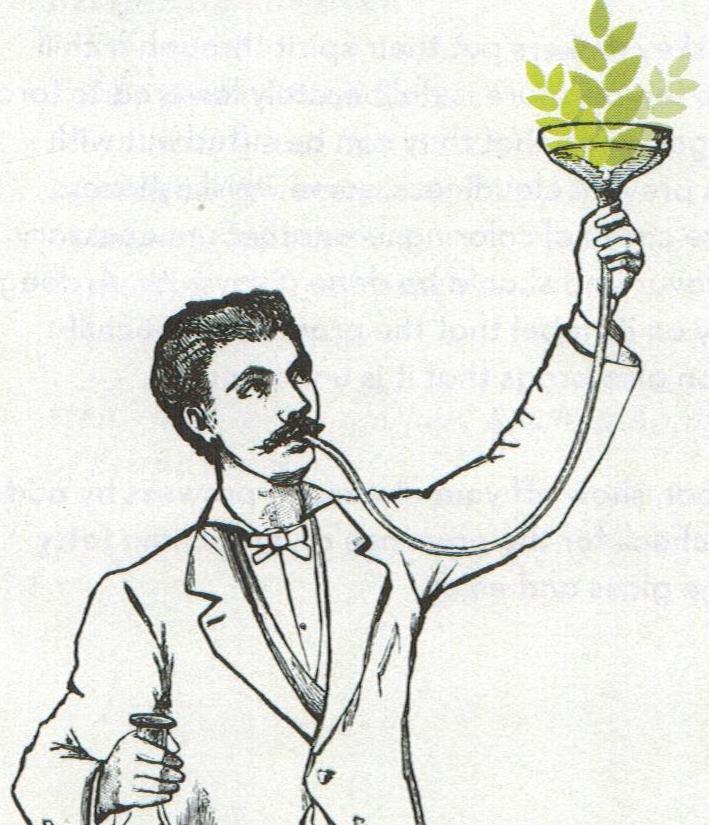With a Ten-Year Delay, We Bring You a Review of the Unique Publication by Amy Stewart, “The Drunken Botanist”
In 2013, Timber Press London published this book subtitled “The Plants That Create The World’s Great Drinks.” The book is divided into three autonomous parts, each of which could stand as an independent guide.

The Truth about Weber
The first part delves into plants that, after fermentation and distillation, provide humanity with wine, beer, and spirits. I hear the reader’s objection: “But I can just surf the internet for that.” Indeed, but that would be just scratching the surface. Amy takes us to entirely different depths.
Take agave, for instance. I can’t count how many times I’ve written that Agave tequilana Weber azul was named after the German botanist Franz Weber. Well, it’s Amy Stewart who revealed that this agave, the only legal source of tequila, was first described in 1902 in a Parisian scientific journal by Frédéric Albert Constantin Weber (1852 – 1903). He resided in Mexico from 1866 to 1867; hastily leaving after the execution of Austrian Emperor Maximilian I. Try Googling this Weber if you didn’t even know he existed…
The book includes 52 cocktails connected in some way to the text. The author, cautious as she is primarily a botanist, presents intriguing cocktail recipes written—let’s say—without any bias. In the case of the Margarita, for instance, apart from the notoriously known ingredients, she suggests a dash of syrup, either made from sugar or directly from agave. I’ve adhered to this practice for a long time; sugar enhances or rounds off a cocktail, emphasizing its ingredients. However, it’s the first time I’ve read about this twist. Of course, there are more botanical observations, many more, some very subtle; like in the Rusty Nail recipe, she reminds that it’s always beneficial—when possible—to use a spirit-based liqueur in combination with the same base liquor in cocktails.
The purpose of this review isn’t to list everything essential from the book’s first part. It intricately discusses everything from potatoes to rye with details that can be discovered (here we go again) only when you know they exist. Special questions are addressed on pages marked with yellow-green color. Here, issues like where beer and whiskey get their color or whether Clas III150c caramel is carcinogenic, or how to view the cold filtration of whiskey, are tackled. In short: through meticulous—meticulous!—study of the first part of the handbook, the reader gains various perspectives on common plants that might never have occurred to them. Thus, they can become a well-prepared partner to their guests.
Galangal and More…
The second part of the book deals with herbs and spices. Many names are usually familiar to a bartender. For example, żubrówka. “Bison grass” grows in the Białowieża Forest, and its stem is part of the equipment for rye vodka, giving it a slightly vanilla scent. Nothing new. But it wouldn’t be Amy if she didn’t come up with captivating information. In the United States, żubrówka has been unavailable since 1954 despite the presence of a million Poles living there. The grass contains coumarin, which, in combination with certain fungi, becomes a dangerous blood thinner. When “The Drunken Botanist” appeared on the market, news emerged that the manufacturer (Polmos Białystok) had found a way to remove the banned substance from the vodka or rather from the grass. If the reader discovers what happened back then, they could inform Bar Magazine’s editorial team to supplement our review!
Fenugreek or Greek hay might not seem like a plant of interest to a bartender at first glance. Yet, it is added to liqueurs or maple syrup, and guests who have favored the Pimm’s Cup claim to easily recognize this spice in it. And galangal? No, no, we’re not tempting our readers! We just want to demonstrate where Amy ventures. The distant cousin of ginger is used secretly in some vermouths and even more secretly in bitters and even in the Eastern European herbal liqueur, Herbert. Just for completeness: the American Food and Drug Administration considers only the species Alpinia officinarum as safe galangal. This is just in case you wanted to use this specialty as part of your signature cocktail recipe.
To conclude this part of the book review: Do you know what today’s snag gin, well known to guests in the 19th century, is called now? Hint: it’s the base for the Charlie Chaplin cocktail.

“The Gardener as a Mixologist”
The third part of Amy Stewart’s handbook begins with the phrase “Gardeners are the best mixologists.” She justifies this by explaining that even the most ordinary garden beds, whether with lemon verbena, pink geranium blooms, or celery stalks, are capable of providing ingredients for thousands of excellent cocktails, or at the very least, their garnishes. In the same breath, she reminds us that mint for a mojito can easily grow in any garden, while cultivating something like a pomegranate is worthwhile if you live in the tropics or have a greenhouse and enough interest in gardening to keep it alive.
By doing so, we inform the reader that this section is about how to grow certain plants at home. It’s not uncommon nowadays, and the book’s advantage is that it suggests how to do it without pretending that “every bartender should also be a gardener” will become a universal truth. Nonetheless, it can certainly prepare many bartenders systematically and thoroughly for encounters with the world of vegetation and the possibilities it offers.
Which, after all, is trendy!



